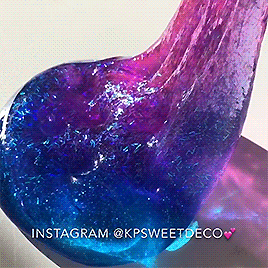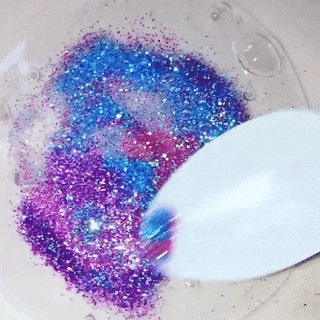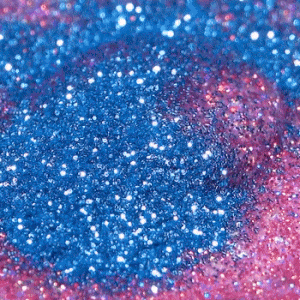Happy Valentine's Day! 🤡💗

happy valentine's day! 🤡💗
More Posts from Comedyexpertise and Others

the African wild cat (from which house cats are descended) looks like a normal house cat but with uncomfortably longer legs

trans clown

Clown Art Month 2023 | Day 20 : Comet
Starburst 🌟
Rockets, Racecars, and the Physics of Going Fast

When our Space Launch System (SLS) rocket launches the Artemis missions to the Moon, it can have a top speed of more than six miles per second. Rockets and racecars are designed with speed in mind to accomplish their missions—but there’s more to speed than just engines and fuel. Learn more about the physics of going fast:

Take a look under the hood, so to speak, of our SLS mega Moon rocket and you’ll find that each of its four RS-25 engines have high-pressure turbopumps that generate a combined 94,400 horsepower per engine. All that horsepower creates more than 2 million pounds of thrust to help launch our four Artemis astronauts inside the Orion spacecraft beyond Earth orbit and onward to the Moon. How does that horsepower compare to a racecar? World champion racecars can generate more than 1,000 horsepower as they speed around the track.

As these vehicles start their engines, a series of special machinery is moving and grooving inside those engines. Turbo engines in racecars work at up to 15,000 rotations per minute, aka rpm. The turbopumps on the RS-25 engines rotate at a staggering 37,000 rpm. SLS’s RS-25 engines will burn for approximately eight minutes, while racecar engines generally run for 1 ½-3 hours during a race.

To use that power effectively, both rockets and racecars are designed to slice through the air as efficiently as possible.
While rockets want to eliminate as much drag as possible, racecars carefully use the air they’re slicing through to keep them pinned to the track and speed around corners faster. This phenomenon is called downforce.

Steering these mighty machines is a delicate process that involves complex mechanics.
Most racecars use a rack-and-pinion system to convert the turn of a steering wheel to precisely point the front tires in the right direction. While SLS doesn’t have a steering wheel, its powerful engines and solid rocket boosters do have nozzles that gimbal, or move, to better direct the force of the thrust during launch and flight.

Racecar drivers and astronauts are laser focused, keeping their sights set on the destination. Pit crews and launch control teams both analyze data from numerous sensors and computers to guide them to the finish line. In the case of our mighty SLS rocket, its 212-foot-tall core stage has nearly 1,000 sensors to help fly, track, and guide the rocket on the right trajectory and at the right speed. That same data is relayed to launch teams on the ground in real time. Like SLS, world-champion racecars use hundreds of sensors to help drivers and teams manage the race and perform at peak levels.

Knowing how to best use, manage, and battle the physics of going fast, is critical in that final lap. You can learn more about rockets and racecars here.
Make sure to follow us on Tumblr for your regular dose of space!
Did I mention I love clowns?










💗 💜 💙 | 💗 💜 💙 | 💗 💜 💙
bi glitter stimboard
-
 galactic-murmaider liked this · 1 month ago
galactic-murmaider liked this · 1 month ago -
 zombiepiratefish liked this · 3 months ago
zombiepiratefish liked this · 3 months ago -
 captainmeezy liked this · 3 months ago
captainmeezy liked this · 3 months ago -
 boredhumanperson liked this · 4 months ago
boredhumanperson liked this · 4 months ago -
 hey-ginger-pyro liked this · 4 months ago
hey-ginger-pyro liked this · 4 months ago -
 poisonberrypuree liked this · 4 months ago
poisonberrypuree liked this · 4 months ago -
 licentiouskiss reblogged this · 4 months ago
licentiouskiss reblogged this · 4 months ago -
 babiyashiru liked this · 6 months ago
babiyashiru liked this · 6 months ago -
 snugglebugx3 liked this · 7 months ago
snugglebugx3 liked this · 7 months ago -
 girlhugger liked this · 9 months ago
girlhugger liked this · 9 months ago -
 cinnamonswirlsshadow liked this · 10 months ago
cinnamonswirlsshadow liked this · 10 months ago -
 akatsuka-rocket liked this · 10 months ago
akatsuka-rocket liked this · 10 months ago -
 akatsuka-rocket reblogged this · 10 months ago
akatsuka-rocket reblogged this · 10 months ago -
 haematicspectre liked this · 10 months ago
haematicspectre liked this · 10 months ago -
 cuddlybigears liked this · 11 months ago
cuddlybigears liked this · 11 months ago -
 weirdly-ayvn liked this · 11 months ago
weirdly-ayvn liked this · 11 months ago -
 holly-opal liked this · 11 months ago
holly-opal liked this · 11 months ago -
 spookeonoffi liked this · 11 months ago
spookeonoffi liked this · 11 months ago -
 itz-miss-kv liked this · 11 months ago
itz-miss-kv liked this · 11 months ago -
 dizziful-clown liked this · 11 months ago
dizziful-clown liked this · 11 months ago -
 localtoaststealer reblogged this · 11 months ago
localtoaststealer reblogged this · 11 months ago -
 bloody-batty liked this · 11 months ago
bloody-batty liked this · 11 months ago -
 yoshiizawa liked this · 11 months ago
yoshiizawa liked this · 11 months ago -
 ratlicker84zero liked this · 11 months ago
ratlicker84zero liked this · 11 months ago -
 itsatomic reblogged this · 1 year ago
itsatomic reblogged this · 1 year ago -
 itsatomic liked this · 1 year ago
itsatomic liked this · 1 year ago -
 noisycowboychopshop liked this · 1 year ago
noisycowboychopshop liked this · 1 year ago -
 astrosstarfall liked this · 1 year ago
astrosstarfall liked this · 1 year ago -
 festus-666 liked this · 1 year ago
festus-666 liked this · 1 year ago -
 leafchan15 liked this · 1 year ago
leafchan15 liked this · 1 year ago -
 kiss-me-over-the-garden-gate reblogged this · 1 year ago
kiss-me-over-the-garden-gate reblogged this · 1 year ago -
 fauxxghost reblogged this · 1 year ago
fauxxghost reblogged this · 1 year ago -
 rosa-shany liked this · 1 year ago
rosa-shany liked this · 1 year ago -
 rychick liked this · 1 year ago
rychick liked this · 1 year ago -
 rosy-eyedsweetpea liked this · 1 year ago
rosy-eyedsweetpea liked this · 1 year ago -
 cyclopsarts liked this · 1 year ago
cyclopsarts liked this · 1 year ago -
 daniel-the-manliest-man liked this · 1 year ago
daniel-the-manliest-man liked this · 1 year ago -
 venchiin reblogged this · 1 year ago
venchiin reblogged this · 1 year ago -
 wifesasha liked this · 1 year ago
wifesasha liked this · 1 year ago -
 transsexualutopia liked this · 1 year ago
transsexualutopia liked this · 1 year ago -
 stylizedclown liked this · 1 year ago
stylizedclown liked this · 1 year ago -
 clownbonk reblogged this · 1 year ago
clownbonk reblogged this · 1 year ago -
 smiledarling-youredying reblogged this · 1 year ago
smiledarling-youredying reblogged this · 1 year ago -
 auntmime liked this · 1 year ago
auntmime liked this · 1 year ago

Mostly just a pet blog, but feel free to ask us questions about clown care(Huge cw for unreality—don’t follow if you struggle with that sort of thing)
48 posts












